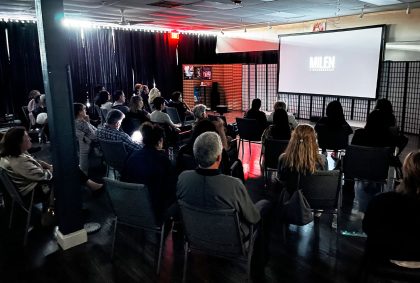Nationally, foreclosure filings dropped 14 percent from January 2011 and 27 percent from a year ago.
 RealtyTrac®, RealtyTrac Inc. the leading online marketplace for foreclosure properties, today released its U.S. Foreclosure Market Report™ for February 2011, which shows foreclosure filings — default notices, scheduled auctions and bank repossessions — were reported on 225,101 U.S. properties in February, a 14 percent decrease from the previous month and a 27 percent decrease from February 2010 — the biggest year-over-year decrease since RealtyTrac began issuing its report in 2005. The report also shows one in every 577 U.S. housing units with a foreclosure filing during the month.
RealtyTrac®, RealtyTrac Inc. the leading online marketplace for foreclosure properties, today released its U.S. Foreclosure Market Report™ for February 2011, which shows foreclosure filings — default notices, scheduled auctions and bank repossessions — were reported on 225,101 U.S. properties in February, a 14 percent decrease from the previous month and a 27 percent decrease from February 2010 — the biggest year-over-year decrease since RealtyTrac began issuing its report in 2005. The report also shows one in every 577 U.S. housing units with a foreclosure filing during the month.
“Foreclosure activity dropped to a 36-month low in February as allegations of improper foreclosure processing continued to dog the mortgage servicing industry and disrupt court dockets,” said James J. Saccacio, chief executive officer of RealtyTrac. “While a small part of February’s decrease can be attributed to it being a short month and bad weather, the bottom line is that the industry is in the midst of a major overhaul that has severely restricted its capacity to process foreclosures. We expect to see the numbers bounce back, but that will likely take several months. And monthly volume may never return to its peak in March 2010 of more than 367,000 properties receiving foreclosure filings.”
Foreclosure Activity by Type
A total of 63,165 U.S. properties received default notices (NOD, LIS) for the first time in February, a 16 percent decrease from the previous month and a 41 percent decrease from February 2010. Default notices hit a 48-month low in February and were 55 percent below a peak of 142,064 in April 2009.
In states with a judicial foreclosure process (LIS), default notices decreased 19 percent from January and were down 48 percent from February 2010. In states with a non-judicial foreclosure process (NOD), default notices decreased 13 percent from January and were down 31 percent from February 2010.
Foreclosure auctions (NTS, NFS) were scheduled for the first time on a total of 97,293 U.S. properties in February, a 10 percent decrease from the previous month and a 21 percent decrease from February 2010. Scheduled foreclosure auctions hit a 27-month low in February and were 38 percent below a peak of 158,105 in March 2010.

Scheduled judicial foreclosure auctions (NFS) decreased 7 percent from January and were down 49 percent from February 2010. Scheduled non-judicial foreclosure auctions (NTS) decreased 11 percent from the previous month and were down 7 percent from February 2010.
Lenders foreclosed on 64,643 U.S. properties in February, down 17 percent from January and down 18 percent from February 2010. Bank repossessions (REO) hit a 22-month low in February and were down 37 percent from their peak of 102,134 in September 2010.
Bank repossessions in states with a judicial foreclosure process decreased 24 percent from January and were down 35 percent from February 2010, while bank repossessions in states with a non-judicial foreclosure process decreased 14 percent from January and were down 8 percent from February 2010.
Illinois foreclosure activity decreased 27 percent from January and was down 45 percent from February 2010, but the state’s 9,592 properties with a foreclosure filing was still the nation’s 11 highest rate for the month.
Nevada, Arizona, California post top state foreclosure rates
Nevada posted the nation’s highest state foreclosure rate for the 50th straight month in February — one in every 119 Nevada housing units had a foreclosure filing during the month — despite a 22 percent decrease in foreclosure activity from the previous month.
Arizona posted the nation’s second highest state foreclosure rate, one in every 178 housing units with a foreclosure filing, and California posted the nation’s third highest state foreclosure rate, one in every 239 housing units with a foreclosure filing.
One in every 273 Utah housing units had a foreclosure filing in February, the nation’s fourth highest foreclosure rate, and one in every 298 Idaho housing units had a foreclosure filing during the month, the nation’s fifth highest foreclosure rate.
Other states with foreclosure rates ranking among the top 10 in February were Georgia, Michigan, Florida, Colorado and Hawaii.
10 states account for more than 70 percent of national total – California (56,229), Florida (18,760) , Arizona(15,485) , Michigan(14,003) , Georgia (12,807) , Texas (11,562), Illinois (9,592), Nevada (9,553), Ohio (8,598) and Wisconsin (4,478).
www.realtytrac.com
Jacqueline Zenn: Depending on whether you are a glass half-full or a glass half-empty type of person, there are two ways to look at this news. The pessimistic would say that the reason for the drop is that February is a short month with terrible weather (especially this year in Chicago), and more importantly, the entire system was slowed down due to allegations of improper foreclosure processing that continue to affect the mortgage servicing industry.

On the other hand, the decrease in filings could be taken as a positive sign that the Chicago real estate market is indeed improving, despite Illinois having the 11th highest foreclosure rate in the country, and that the drastic drop in filings is an indication that things are looking up for the spring market.
Regardless of whether you fall on the optimistic or pessimistic side of the fence, we’ll keep an eye on the statistics over the next few months and see if the improvement continues.






Hi! Quick question that’s entirely off topic. Do you know how to make your site mobile friendly?
My website looks weird when browsing from my
iphone4. I’m trying to find a theme or plugin that might be able to correct this problem.
If you have any suggestions, please share. Appreciate it!
Tips for Avoiding Foreclosure
If you are unable to make your mortgage payment:
1. Don’t ignore the problem. Don’t ignore the letters from your lender.
The further behind you become, the harder it will be to reinstate your loan and the more likely that you will lose your house.
2. Contact your lender immediately.
Lenders do not want your house. They have options to help borrowers through difficult financial times.
3. Open and respond to all mail from your lender.
The first notices you receive will offer good information about foreclosure prevention options that can help you weather financial problems. Later mail may include important notices of pending legal action. Your failure to open the mail will not be an excuse in foreclosure court.
4. Know your mortgage rights.
Find your loan documents and read them so you know what your lender may do if you can’t make your payments. Learn about the foreclosure laws and timeframes in your state (as every state is different) by contacting the State Government Housing Office.
5. Understand foreclosure prevention options.
Valuable information about foreclosure prevention (also called loss mitigation) options can be found online.
6. Contact a HUD-approved housing counselor.
Housing counselors can help you understand the law and your options, organize your finances and represent you in negotiations with your lender, if you need this assistance – call (800) 569-4287.
7. Prioritize your spending
Keeping your house should be your first priority. Review your finances. Look for optional expenses–cable TV, memberships, entertainment–that you can eliminate. Delay payments on credit cards and other „unsecured“ debt until you have paid your mortgage.
8. Use your assets – a second car, jewelry, a whole life insurance policy-that you can sell for cash to help reinstate your loan; get an extra job to bring in additional income.
9. Avoid foreclosure prevention companies.
You don’t need to pay fees for foreclosure prevention help–use that money to pay the mortgage instead.
10. Don’t lose your house to foreclosure recovery scams!